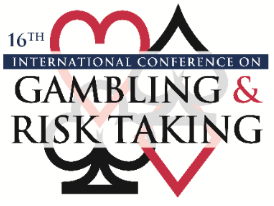Session Title
Session 1-4-C: Protecting the Young
Presentation Type
Event
Location
The Mirage Hotel & Casino, Las Vegas, Nevada
Start Date
7-6-2016 4:00 PM
End Date
7-6-2016 5:30 PM
Disciplines
Gaming Law | Law and Psychology | Law Enforcement and Corrections | Marketing Law
Abstract
The liberalisation of the gambling advertising facilitated in the UK by the Gambling Act 2005 led to a natural but phenomenal overall expansion of gambling advertising. While any claims that such gambling marketing may lead to harm continue to be strongly contested, it is at least implicitly accepted that some vulnerable persons, including minors, may require specific protection as mandated by the statutory licensing objective. In the UK this is aimed to be achieved by ensuring that gambling advertisements are ‘socially responsible’ and by the timing/placement restrictions. Compliance is monitored by the ASA that also publishes standards-setting Codes and adjudicates on complaints. There is, however, a paucity of independent research that evaluates whether the practical application of the high-level rules is sufficiently aligned with the third licensing objective. The paper provides a systematic analysis of the ASA adjudications and draws from findings collected from minors during focus groups carried out as part of the author’s PhD thesis. It argues that while the existing enforcement framework and self-regulatory principles go a long way in restraining the industry from acute exploitation they are not sufficiently definite to eliminate the possibility of emotive appeal, do not encompass all advertising techniques, are too focused on technical approach at the expense of a more in-depth assessment of the potential wider impact of the image portrayed, and still rely on the transmission theory that does not necessarily correspond to how minors construct and react to such advertisements. Presents insight from minors’ views and suggests practical recommendations.
Keywords
gambling advertising, self-regulatory rules, compliance interpretation, protection of minors
Included in
Gaming Law Commons, Law and Psychology Commons, Law Enforcement and Corrections Commons, Marketing Law Commons
The Effectiveness of Self-Regulatory Gambling Advertising Rules on the Protection of Minors and Vulnerable Persons (UK based study)
The Mirage Hotel & Casino, Las Vegas, Nevada
The liberalisation of the gambling advertising facilitated in the UK by the Gambling Act 2005 led to a natural but phenomenal overall expansion of gambling advertising. While any claims that such gambling marketing may lead to harm continue to be strongly contested, it is at least implicitly accepted that some vulnerable persons, including minors, may require specific protection as mandated by the statutory licensing objective. In the UK this is aimed to be achieved by ensuring that gambling advertisements are ‘socially responsible’ and by the timing/placement restrictions. Compliance is monitored by the ASA that also publishes standards-setting Codes and adjudicates on complaints. There is, however, a paucity of independent research that evaluates whether the practical application of the high-level rules is sufficiently aligned with the third licensing objective. The paper provides a systematic analysis of the ASA adjudications and draws from findings collected from minors during focus groups carried out as part of the author’s PhD thesis. It argues that while the existing enforcement framework and self-regulatory principles go a long way in restraining the industry from acute exploitation they are not sufficiently definite to eliminate the possibility of emotive appeal, do not encompass all advertising techniques, are too focused on technical approach at the expense of a more in-depth assessment of the potential wider impact of the image portrayed, and still rely on the transmission theory that does not necessarily correspond to how minors construct and react to such advertisements. Presents insight from minors’ views and suggests practical recommendations.


Comments
Attachment: PDF containing 22 slides